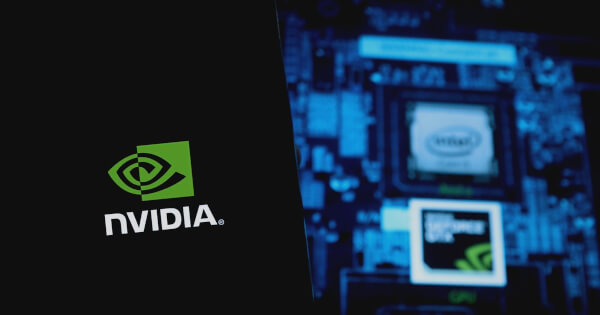Ripple (XRP) aims to revolutionize financial services using blockchain and digital assets, focusing on institutional DeFi, cross-border payments, and stablecoins.
Ripple (XRP), a pioneer in blockchain technology, is making significant strides in transforming the financial infrastructure by leveraging blockchain and digital assets. Founded on the belief that blockchain would become the backbone of global financial services, Ripple aims to create more affordable and accessible financial solutions for individuals and businesses worldwide, according to ripple.com.
Institutional DeFi and Market Evolution
Initially, Ripple focused on the potential of institutional decentralized finance (DeFi) to foster a more equitable financial system. At the time, the cryptocurrency and blockchain sectors were in their infancy, lacking the necessary infrastructure, liquidity, and regulatory clarity for widespread institutional adoption. Fast forward over a decade, and the landscape has dramatically evolved with the approval of Bitcoin (BTC) and Ethereum (ETH) Spot ETFs in the U.S., and major financial entities like BlackRock and Fidelity entering the crypto space.
Ripple’s Product Suite Evolution
Ripple’s initial foray into blockchain was through cross-border payments, utilizing the XRP Ledger (XRPL) and its native digital asset, XRP. The XRPL’s inherent features of speed, low cost, transparency, and scalability made it an ideal solution for the inefficiencies of traditional financial systems. Today, Ripple’s cross-border payments solution covers over 80 payout markets, representing more than 90% of daily foreign exchange markets, and processes over $50 billion in volume.
Expanding beyond payments, Ripple now offers a comprehensive suite of digital asset infrastructure services, including on- and off-ramps, custody, and liquidity solutions. The acquisition of Metaco in 2023, a digital asset custody technology provider, further strengthened Ripple’s capabilities, positioning it as a leader in secure and compliant digital asset infrastructure.
Bridging Traditional Finance and Crypto
Ripple’s commitment to bridging traditional finance (TradFi) and crypto is evident in its recent announcement to launch a stablecoin, Ripple USD (RLUSD), on the XRP Ledger and Ethereum blockchains. This initiative aims to integrate RLUSD into Ripple Payments, alongside XRP, to meet the evolving needs of cross-border payments customers.
The XRPL is favored for institutional DeFi use cases due to its reliability, high performance, and low transaction costs. The introduction of high-quality stablecoins on the XRPL is expected to unlock new capabilities and use cases for DeFi developers, further enhancing liquidity and efficiency in global payments.
XRP Ledger: Built for Business
The XRP Ledger remains the cornerstone of Ripple’s offerings, known for its robustness, efficiency, and scalability. Since its inception in 2012, XRPL has processed over 2.8 billion transactions without failure or security breaches. It also features a built-in decentralized exchange (DEX), allowing users to trade any type of token without intermediaries.
Ripple, along with other projects like Zoniqx, Orchestra Finance, and CredeFi, is leveraging XRPL to develop modern financial tools. The integration of XRPL’s advanced features into Ripple’s business aims to bring the benefits of decentralized finance to a broader audience in a secure and compliant manner.
Future Prospects
Ripple continues to position itself as a leading digital asset infrastructure provider, focusing on long-term collaboration with financial institutions, regulators, and policymakers. The company’s ambition is to be the go-to provider for enterprises looking to integrate blockchain technology without the need for extensive in-house expertise or resources.

Groundbreaking research underscores NVIDIA’s pivotal role in advancing quantum computing, as revealed in a recent study published in the journal Nature. The study, led by Nobel laureate Giorgio Parisi, utilized NVIDIA-powered supercomputers to validate a pathway toward the commercialization of quantum computing, specifically focusing on quantum annealing.
Quantum Annealing and Optimization Problems
The research team employed a vast array of computational resources, including 2 million GPU computing hours at the Leonardo facility in Bologna, Italy, 160,000 GPU hours on the Meluxina-GPU cluster in Luxembourg, and 10,000 GPU hours from the Spanish Supercomputing Network. They also accessed the Dariah cluster in Lecce, Italy, to simulate the behavior of quantum annealers—a type of quantum computer designed to solve complex optimization problems.
Unlike classical computers that process information in binary (0s and 1s), quantum computers use quantum bits or qubits, allowing information to be processed in entirely new ways. Quantum annealers, though not universally useful, may offer advantages for solving specific types of optimization problems.
Key Findings and Implications
The paper titled “The Quantum Transition of the Two-Dimensional Ising Spin Glass” explores the phase transition of Ising spin glass—a disordered magnetic material in a two-dimensional plane. This significant step forward enhances the understanding of how the properties of magnetic particles in such a plane can abruptly change.
GPU-accelerated simulations were crucial in this study, enabling researchers to delve into the behavior of complex systems and develop approaches to quantum computing. Quantum annealers, like those developed by D-Wave, operate by gradually reducing a magnetic field applied to magnetically susceptible particles. If varied slowly enough, these particles arrange themselves to minimize the energy of the final configuration, solving the encoded problem.
Applications and Future Prospects
Understanding these systems helps scientists develop better algorithms for tackling difficult problems by mimicking natural processes. This is essential for advancing quantum annealing and its applications in fields like logistics, cryptography, vehicle routing, portfolio optimization, and protein folding.
Unlike gate-model quantum computers, which apply a sequence of quantum gates, quantum annealers allow a quantum system to evolve freely over time. While not a universal computer, quantum annealers may offer significant advantages for specific optimization problems.
The extensive simulations performed on NVIDIA GPUs provided insights into the key parameters of spin glasses in quantum annealers, enhancing the understanding of achieving quantum speedup on critical problems. Much of this groundbreaking work was first presented at NVIDIA’s GTC 2024 technology conference.